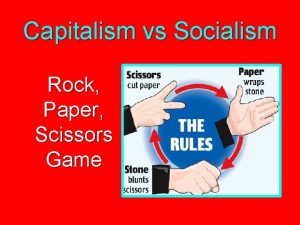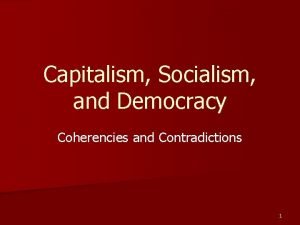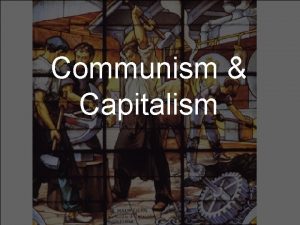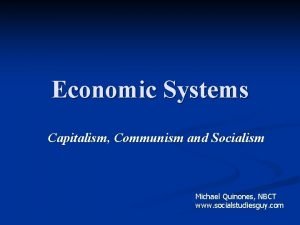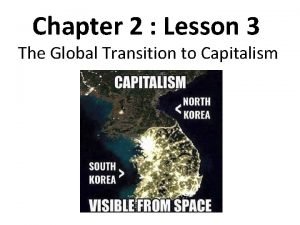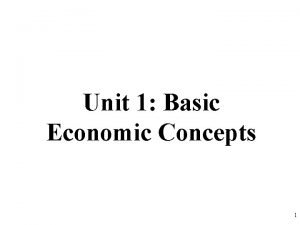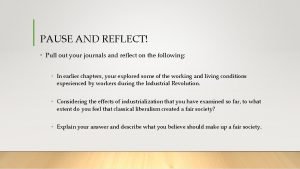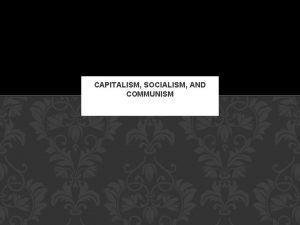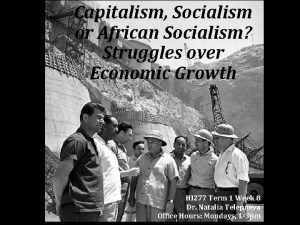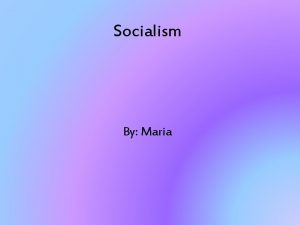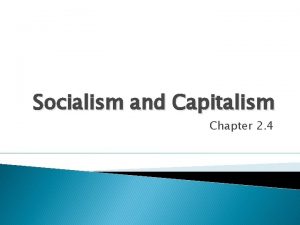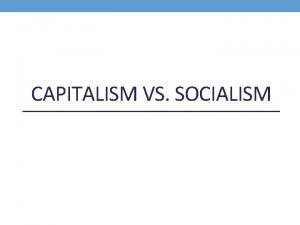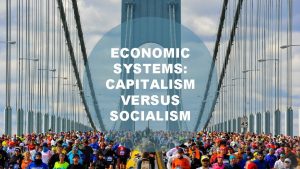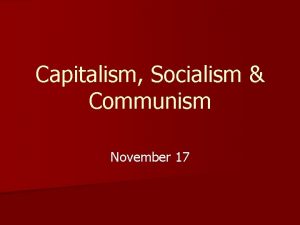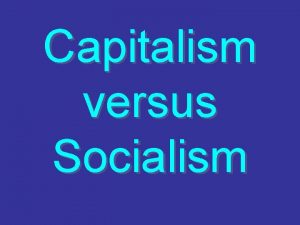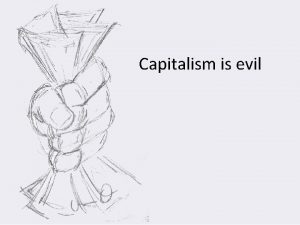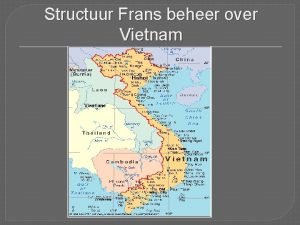Vietnam Transition from Socialism and Awakening Capitalism Over














- Slides: 14

Vietnam Transition from Socialism and Awakening Capitalism

• Over 82 million people but only 25 percent urban • Population clusters in Mekong delta and Red River Valley • Ruled by China 1000 years • Conquest of Vietnam by France began in 1858 and was completed by 1884. • Declared independence from France in 1945 culminating victory in Dien Bien Phu in 1954 • Viet invasion of Cambodia 1978 -79 brought isolationdependence on Soviet Union • One of few surviving Leninist states

People

Structure of the Economy • Poor, densely-populated country forced to recover from war, the loss of financial support from the old Soviet Bloc, and the rigidities of a centrally-planned economy • 1997 Asian financial crisis highlighted problems but rather than reform, reaffirmed the government's belief that shifting to a market-oriented economy would lead to disaster. GDP growth of 8. 5% in 1997 fell to 6% in 1998 and 5% in 1999. • New leadership in 2001, Vietnamese have reaffirmed commitment to economic liberalization, implement structural reforms needed to modernize the economy and to produce more competitive, export-driven industries.

Structure of the Economy • Agriculture 1994 - 67% 2004 - 24% • Industry 1994 -12% 2004 - 37% • Services 1994 - 21% 2004 - 39%

Agrarian Economy Gradually Transitions to Industry

Hanoi • Situated in the Red River Valley at confluence of three rivers-easily defended • Fertile soil for rice cultivation basis of food regime • Captured by Han dynasty and endured 1000 years of Chinese rule • 11 th Century after Viet independence Thang Long capital and political focus • But also commercial and manufacturing hub with Red River outlet to South China Sea • Repeated Chinese incursions but in 1428 Chinese were pushed out • Viet Nam rapidly expanded south to the Mekong delta and to the Gulf of Siam • Thang Long (Hanoi) took on character of an imperial city on the Chinese model

Hanoi • But by 17 th C Le dynasty power declined- noble families N&S dominated • Expanses of cultivable land climate more favorable to agriculture, South took on new character • Northern provinces highly traditional and inward lookingfocus on wet rice • South with many tropical products became linked to major trade network to China, Japan and Korea • South became less traditional , more entrepreneurial, more prosperous and more in touch with outside • Cultural split between the two regions became intensified and eventually would have impact during colonial and Cold War eras

Hanoi Buddhist Temple and Opera House

Hanoi

• French colonists filled in Oldthe. Quarter 36 Streets canals to create a network of 36 narrow streets that quickly acquired the name of the commodity traded there. • Bat Dan Wooden Bowls • Bat Su China Bowls • Cha Ca Roasted Fish • Chan Cam String Instruments • Cho Gao. Rice Market • Hang Bac Silversmiths • Hang Bong Cotton • Hang But Brushes

Ho Chi Minh City-aka Saigon • Economic heart of • • • Viet Nam 1980> 3. 4 mil 2003> 5. 7 mil Entrepreneurial dynamism French colonial architecture combined with new skyscrapers Main locus foreign investment

Economic Reform or Renovation: Doi Moi • Dismantling of economic communes or collectives • Reallocation of land use for family farms • Opening country to foreign direct investmentrecognize value of market mechanism • Reform of banking sector • Establish real interest rates>>>Savings • Direct subsidies to State Owned Enterprises (SOEs) ended

Development Strategies and Problems • Since 1987 New Economic Zones established to redirect and resettle migrants to rural areas from cities - land in highlands- limited success • Unprofitable state enterprises cut loose- no longer restricted by govt set prices and quotas • Encourage foreign capital and investment • Encouragement of entrepreneurship allowing private business to operate • Mekong River Commission – designed to support joint activities among Indochinese states- harnessing river for power, navigation, flood control, fishing and tourism • Greater Mekong Sub region- infrastructure improvements needed to integrate several economies
 Socialism and capitalism in an inspector calls bbc bitesize
Socialism and capitalism in an inspector calls bbc bitesize Rock paper scissors capitalism game
Rock paper scissors capitalism game Traditional capitalism
Traditional capitalism Feudalism capitalism socialism
Feudalism capitalism socialism What is communism example
What is communism example Capitalism communism socialism fascism
Capitalism communism socialism fascism Capitalism communism socialism fascism
Capitalism communism socialism fascism Capitalism communism socialism fascism
Capitalism communism socialism fascism Lesson 3 the global transition to capitalism answer key
Lesson 3 the global transition to capitalism answer key Communist meaning
Communist meaning Difference between socialism and communism
Difference between socialism and communism Great awakening vs enlightenment
Great awakening vs enlightenment Great awakening and enlightenment
Great awakening and enlightenment Socialism vs collectivism
Socialism vs collectivism Collectivist or individualist
Collectivist or individualist

